

1970
First Computer Program
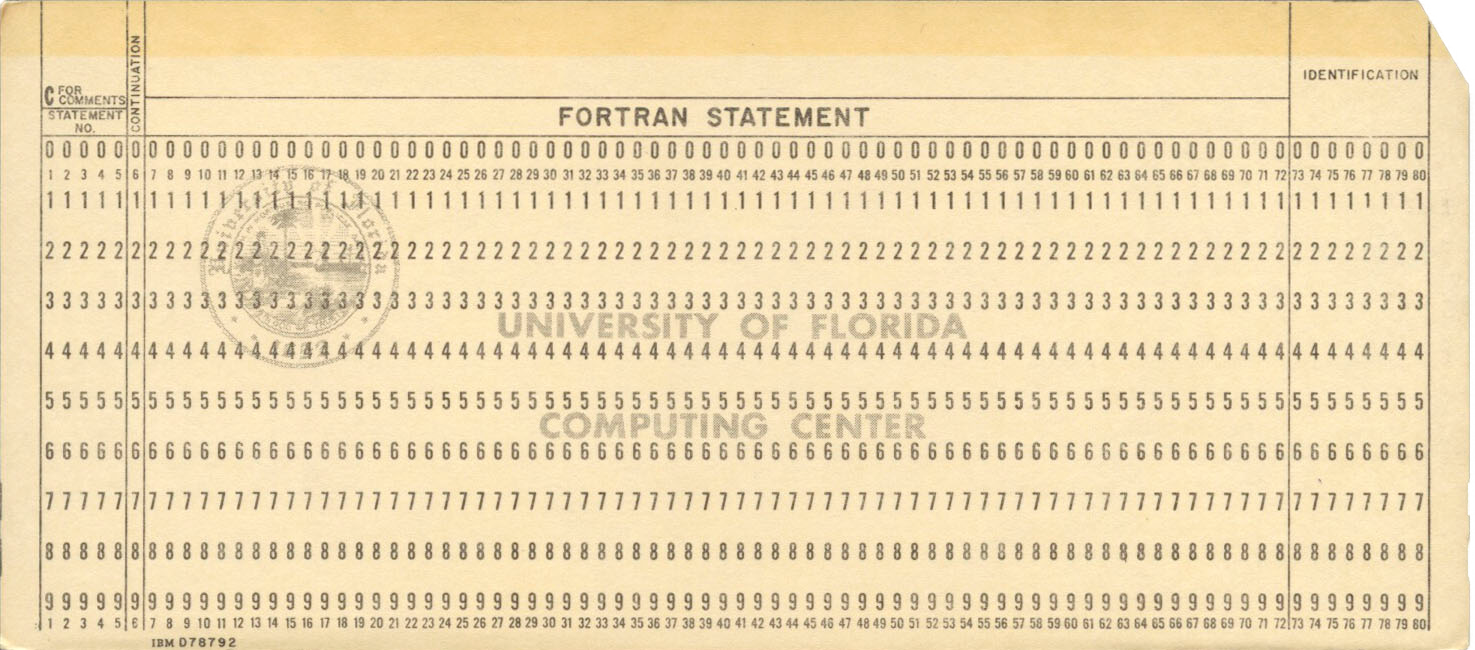
12345678901234567890123456789012345678901234567890123456789012345678901234567890
program hello
print *, "Hello World!"
end program
But that wasn’t all, there were special control cards that also had to be punched. These the first control card told the computer who we were, our name and account number which we could get at the end of class from a printout she had. In addition to the first account control card there were a couple more, one to tell the computer it was Fortran and couple more. The total “program” was six cards. She explained the process, using a keypunch, punch up the six cards into a “deck” and put a rubber band around them then take them to the desk at the computer center and give them to the person there. A person, who the instructor called an operator, would every fifteen minutes come out and collect the cards, feed them into the computer, and then fifteen or so minutes later bring out the computer printouts and file them in horizontal files in the back room under your account number. She stressed the importance of typing the first control card with you account number correctly, if you did not you would not get or find your printout.
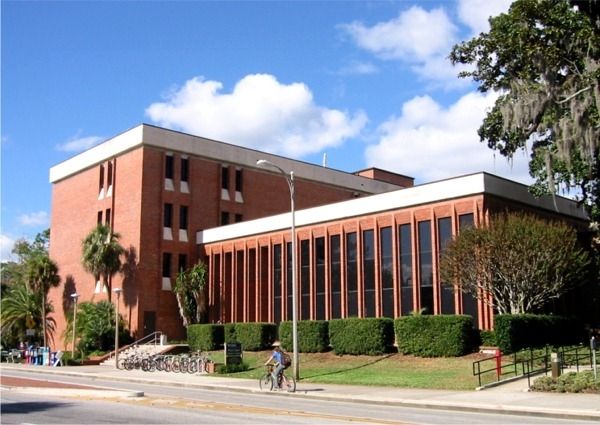 Bryant
Space Science Center at UF
Bryant
Space Science Center at UF
I took copious notes, I knew what to do, I look over at Dad’s notepad and he added to his notes from the first week, “punch card”. We get up and leave the auditorium, the three of us walk across the street to the Computing Center and enter the front lobby. It was a nice new building built two years earlier in 1968, now called the Bryant Space Science Center. In the lobby was a desk that had several trays on it and a sign that said “Students: Place cards here” with an arrow pointing to the tray which was a quarter full of cards. While we looked around, a person comes out of the side door with a tray of cards, places it on another table, picks up the new tray and takes it back though the door. Ok, that was a computer operator I thought.
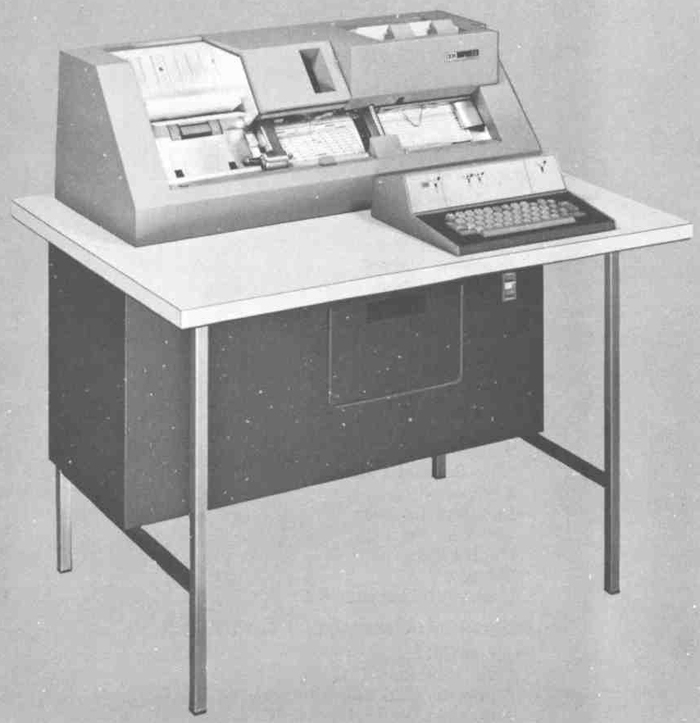 IBM
Card machine
IBM
Card machine
We were told the keypunch machines were down in the basement, so we find the stairs and head down where, just past the soda and snack machines, was an open area that had eight keypunch machines, four on each wall. On the wall was a poster with the basic instructions on how to operate the keypunch which we read. Ready to punch, we wait for three machines next to each other were available and sat down. I take the cellophane wrapping off my deck of cards and place them in the input hopper. The machine has a keyboard similar to a typewriter but with a few extra keys. I press next card key and, whoosh, the machine makes a noise, a card is sucked into it, and places it behind the punch contraption in front of me. Okay that was a bit startling, but it looked ready. I take out my notes, first card is the control card, I start typing, account number first, I press a number key and the machine make a clunk, I continue, I continue typing all eight digits, make sure to use zeros not O’s, use the number 1 and not the “l” key, next my name, it has to fit in the next twenty columns, and a few other control numbers. With the card finished, I press the return key like on a keyboard, in a flash the machine makes a few clunking sounds, the card shoots out to the left into the output bin and a new card is sucked into the punch station. I check out the card and neatly across the top is what I typed with holes punched into the card below each letter, my first punched card.
On the first control card were cut off numbers to limit the program from getting out of control. The cut off numbers specified maximums for computer time, pages printed, and cards punched, limiting the program in case it went out of control and took over the entire mainframe and the world. No, just kidding about the world part.
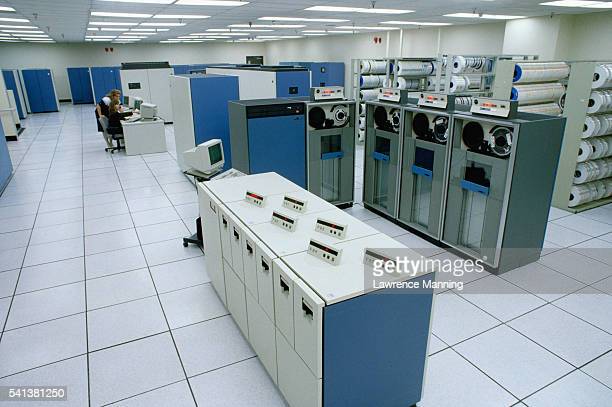 IBM
Mainframe in computer room similiar to the University's computer
room.. Disk units in forground, tape unit on right with racks of
tapes far right.
IBM
Mainframe in computer room similiar to the University's computer
room.. Disk units in forground, tape unit on right with racks of
tapes far right.
The cut off numbers were not only important in controlling the program but limited how much you would be charged for using the computer. The mainframe was an IBM 360 Model 65, it, along with it associated peripherals, took up the whole floor of the right wing of the building. There was floor to ceiling windows along three walls of the floor with a sidewalk outside that I would go around and look in. The people inside would sometimes see me and would waive or smile, they looked friendly. So, the main frame was huge, and it cost a fortune so people who used it were charged to use it. The teacher said we each had ten dollars of what she called “funny money”; it wasn’t real money but accounted for our use of the mainframe. She followed saying make sure we put low control numbers on the card so we didn’t use it from a mistake.
It didn’t take me long before I had all six of my cards punched, taking typing in 9th grade proved to be useful. I place a rubber band around them, and I look over at Dad and Paul. They were struggling, Dad had the first card and was working on the second, using one finger to type with. Paul was still working on the first card. I told Dad I was going up upstairs to put my cards in the bin, he said okay, and I left him and Paul there working on their card decks. Upstairs back in the lobby I put my card deck into the tray, and in a few minutes an operator comes out, drops off a processed tray, and picks up the tray with my deck and takes it back into the computer room. I wait, ten minutes later the operator again comes out, sets down the tray with my card deck in it and takes another back.
Dad and Paul finished their card decks and I show them what to do and the put their cards into the tray and wait. I tell them I’m going to check for my printout which was filed in another room behind the lobby. Arriving at the printout room I find several tables with having file trays on them marked with letters of the alphabet above them. I got to the one for M, go through the printouts that were folded in half and find the one with my name on it. I was excited, I open it up, after the title page was a page with a dozen lines of information, then the page that listed my three line program showing what I had typed and after the second line it printed “Syntax error number 5341, line 2, missing quote” I’m disappointed but saw what was wrong, an easy fix. The last page listed the costs, a microsecond of computer time, 5 cents, punch cards in 3 cents, pages printed 20 cents, total cost $0.28, balance on account $9.72.
I go back and show Dad the printout and explain what I did wrong. Dad’s and Paul’s card decks came out and I showed them the computer printout room, and then went downstairs and punched a new card to correct my mistake, and then went back upstairs, put my card in the tray and went to check on Dad. His printout had just come out and he was looking at it, he also had a syntax error as did Paul. I told them I fixed mine and put my cards in the tray and I would wait on them while they went down and punched new cards. Neither were very enthusiastic about it. They were still standing there when an operator came out to file the printouts with one being mine. Dad and Paul came over as I opened it up, there were no errors and there was one more page, it said:
Hello Larry!
I had changed the word “World” in our instructions to my name. It was like HAL was talking to me. Dad and Paul congratulated me and decided since my program worked the didn’t need to fix theirs and we left to go home. I looked at the printouts the whole way home in the car. The second working program cost 5 cents more since it had one more page for the Hello Larry output from the program.
Dad and I continued going to the remaining classes, although Dad never did finish a program, I think he enjoyed watching me be so excited about it. We soon learned about the more advanced FORTRAN instructions like the “if, then, but” statement, just kidding, it was “if, then, else”. The in following weeks we wrote longer programs, with the final program reading four input cards with a number on each, then printing out color for each card. Account balance after the last program, $4.97. I had completed the course and received a certificate.
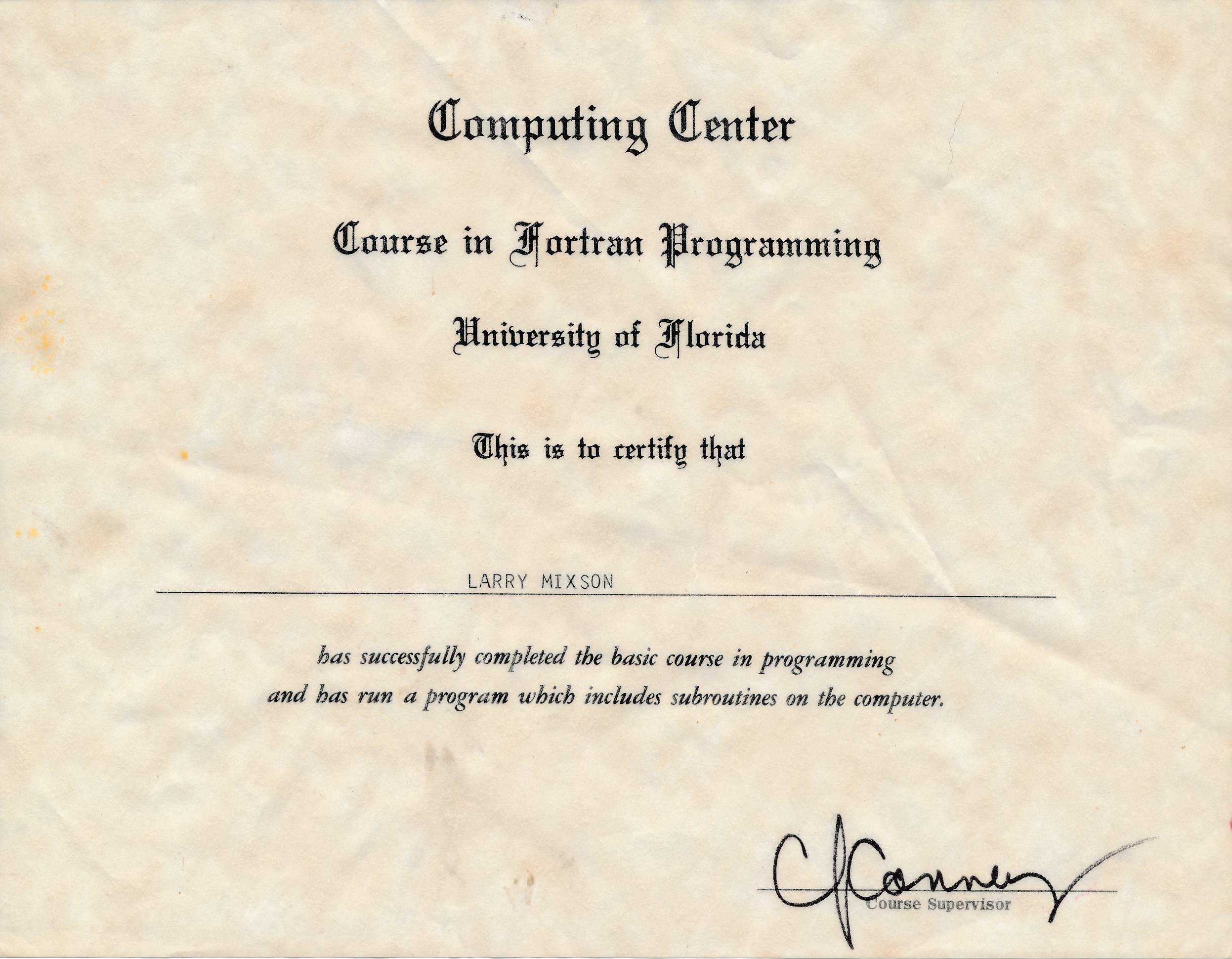
A few weeks later they offered a second more advanced course, and I asked Dad if he would take me if I signed up for it and he said he would. Dad dropped would me off before class and pick me up in front of the computer center an hour after the class giving me time to punch and run my programs. The first class reviewed the first course but with a longer program to start with. We learned more advanced print formatting, subroutines, loops and spirals in which your program could spiral down a blackhole never to stop unless you put a limit on your control card. We learned about variables and math statements which I instantly understood from algebra class. After all, the FORTAN computer language was an acronym for Formula Translation and was created for mathematical processing. Later we covered “arrays” which I didn’t really understand at the time, but I punched up the program the teacher provided, and it worked. I was fascinated with it all.
Updated: 11-09-2022